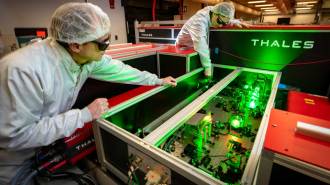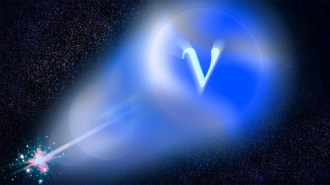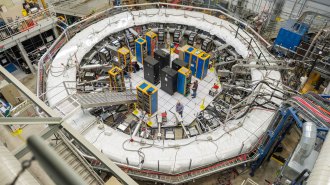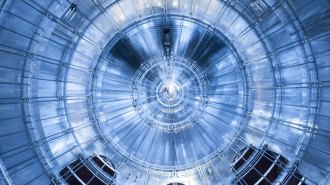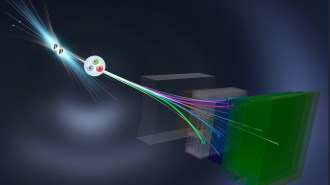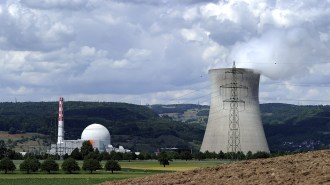New analysis boosts case for smaller proton
Controversy continues over size of subatomic particle’s radius
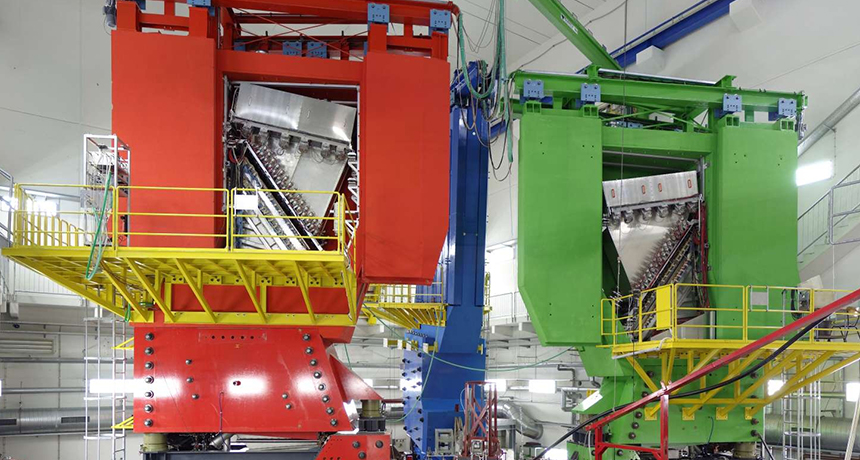
PETITE PROTON An electron scattering experiment (shown) at the Mainz Microtron in Germany may have found evidence that supports the case for a smaller proton, according to a new analysis of old data.
Institute of Nuclear Physics
- More than 2 years ago
Editor’s Note: After this article was published, Horbatsch and colleagues discovered an error in their analysis, which weakened the conclusions. The new calculation of the proton radius falls in between the two previous estimates, and therefore does not add much additional support for the smaller proton.
A spat over the size of the proton just got a bit more complicated.
Measurements of the proton’s radius disagree, with one group of scientists saying it’s smaller than the accepted estimate. Now, a new analysis of old data bolsters the case for a small proton. But the result may dash hopes that the discrepancy could point the way to new physics.
Scientists at York University in Toronto and the Autonomous University of Barcelona reanalyzed data from a 2010 electron scattering experiment at the Mainz Microtron in Germany, in which physicists bombarded protons with electrons and observed how the electrons ricocheted. That scattering, under the influence of the protons’ spheres of positive charge, allows scientists to tease out the size of a proton. The updated estimate came up small, the scientists report November 1 on arXiv.org.
“I think it’s not going to be easy for the proponents of a relatively large proton radius to just discuss this away,” says physicist Randolf Pohl of the Max Planck Institute of Quantum Optics in Garching, Germany. “But I’m not convinced that people will accept it.”
Until several years ago, scientists’ various techniques for sizing up the proton were in agreement. Electron scattering studies like the Mainz experiment implied the same size proton as a second technique, which involves studying the energy levels of hydrogen atoms. These estimates indicated that the proton’s radius was about 0.88 quadrillionths of a meter. But in 2010, a new technique caused a kerfuffle. Measurements of the proton radius using muonic hydrogen — a hydrogen atom with its electron replaced by a heavier relative called a muon — pegged the proton to a size 4 percent smaller than the other estimates (SN: 7/31/10, p. 7).
The flaw among the three techniques might seem likely to lie with the one outlier, the muon experiment. But “there’s actually quite a bit of certainty about those results,” says physicist Marko Horbatsch of York University, a coauthor of the new paper. So Horbatsch and colleagues decided to revisit electron scattering instead, using a subset of the data from the Mainz experiment. Horbatsch’s team focused on glancing collisions where the electron altered its course only slightly. Those collisions are the most essential for determining the proton radius. Then the researchers used theoretical calculations to account for effects that occur in more extreme collisions. Their analysis revealed a slightly scaled-down proton.
If the result is reinforced by future electron scattering measurements, the hydrogen atom data that resulted in the larger-sized proton would still require explanation. But it would also mean that the discrepancy won’t lead to new insights about the universe. Under the standard model of particle physics, muons and electrons should be identical except for mass. Physicists had hoped that the black sheep status of the muonic hydrogen experiment indicated something was different about muons. Agreement of the electron scattering and muonic hydrogen experiments eliminates that possible explanation.
The new analysis is “undoubtedly sensible,” says physicist Judith McGovern of the University of Manchester. “I’m a bit surprised no one has done it before. In fact, I’m a bit surprised I haven’t done it before.”
But that doesn’t mean scientists are fully convinced. MIT physicist Jan Bernauer, one of the authors of the original electron scattering result, says he doesn’t think the puzzle will be solved by reanalysis of existing data. “I’m positive that new data are needed.”
